How a building the Muscogee (Creek) Nation lost for nearly 100 years tells their authentic story
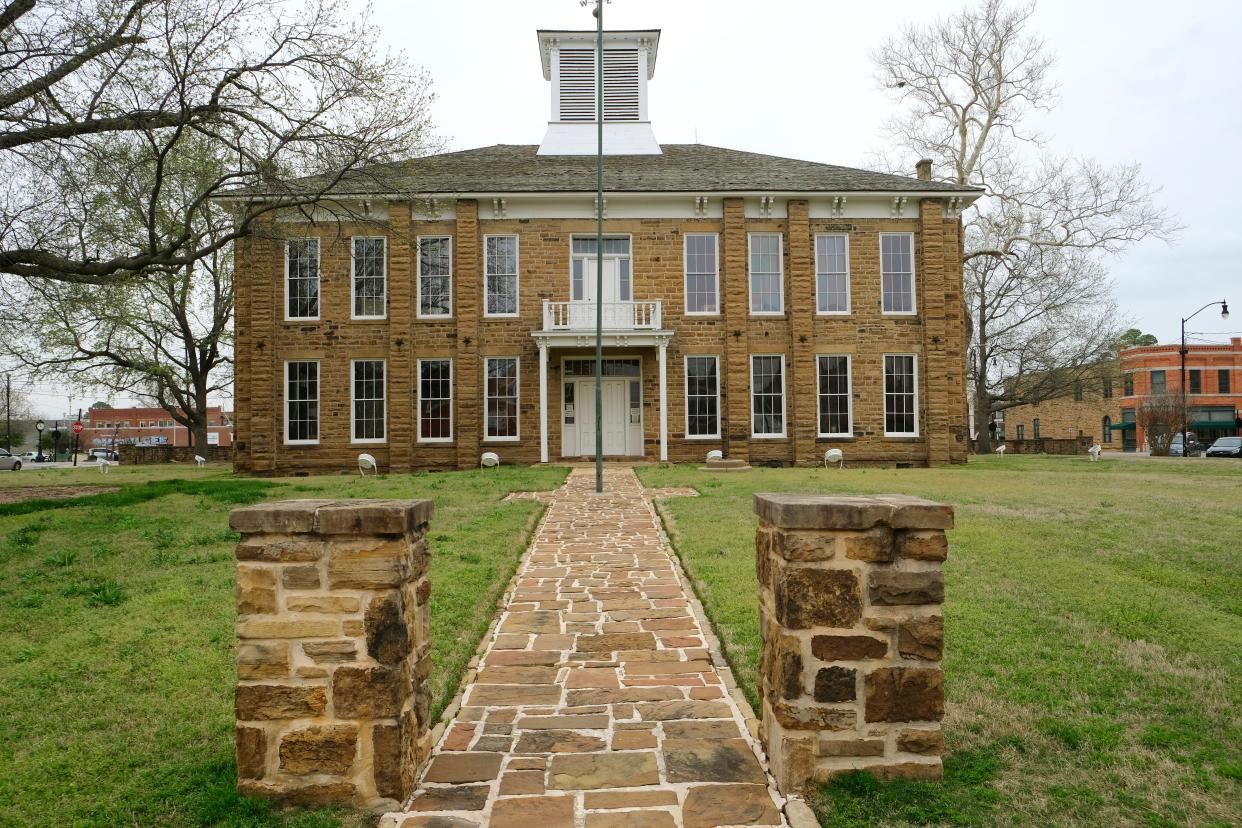
The second story of the Creek Nation Council House buzzed with activity every October.
The House of Kings filled one room, and the House of Warriors gathered in a larger space across the hall. Together, the legislators considered new codes and contemplated their nation’s future in Indian Territory.
The Council House stood as the center of Muscogee (Creek) government for more than 30 years, and the town of Okmulgee built around it. But the Muscogee Nation was forced out of the building when Congress stripped the powers of tribal governments around the turn of the 20th century. More than 100 years passed before the tribe was able to buy it back.
Now the Council House stands as an educational space that shares that chapter of time from the tribe’s perspective.
“We wanted to certainly fill in lots of information that’s not taught in schools,” said John Beaver, curator of the Council House and a citizen of the Muscogee Nation.
A history of the Creek Nation Council House, and the Muscogee (Creek) Nation's first unified government
The Council House was originally a two-story log cabin built in 1868, one year after the tribal nation adopted a constitution and chose a capitol site. It marked the first time the Creek Nation would operate under a unified government, Beaver said.
The Creek Nation was made up of self-governing tribal towns, whose citizens were all forced to leave their homelands around Georgia and Alabama and move to a reservation in eastern Oklahoma. Dozens of other tribes were also forced into the lands that now make up Oklahoma.
Oklahoma landmarks: Quanah Parker's Star House featured in Ken Burns' 'American Buffalo' film
As pressure grew to open the area to white settlers, federal officials discussed carving the region up into separate states, with one that would encompass all the tribal nations. The Council House hosted annual talks about the proposal from 1870 to 1875, and delegates from many tribes traveled to attend. No consensus was ever reached.
Creek leaders replaced the cabin with a stone building in time for the 1878 legislative session. It is still standing after at least two extensive renovations.
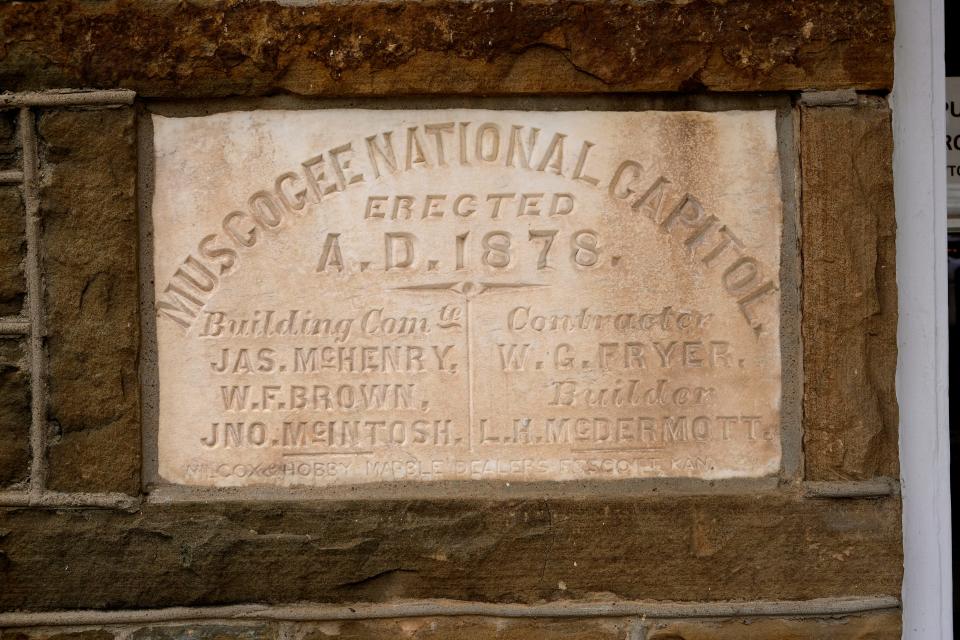
The building not only included legislative chambers, but also executive, judicial and administrative spaces. Its layout today mirrors the original design.
Visitors can explore how each room was used. The original wooden desk stands in the center of the office of the principal chief. An 1890s-copy of the tribal nation’s constitution and codes written in the Mvskoke language lies open on the desk, along with other artifacts. Rows of wooden school desks line the Board of Education office, which doubled as a school room.
Hanging exhibits in every room offer historical information and context, with text explanations supplemented by pictures, documents and maps. One set of panels, for instance, explains how the arrival of railroads impacted the Muscogee Nation and created population hubs of non-tribal citizens.
Oklahoma landmarks: Mickey Mantle's childhood home in Oklahoma to be sold for $7 a share
Another set of panels explains the increasing pressure applied by the federal government, which was trying to force tribal nations to assimilate and divide up their lands. As one example, U.S. officials would not allow the tribe to spend $25 to translate some legal documents into Mvskoke.
The exhibits introduce people to issues that deeply affected the Muscogee Nation and other tribes, but that may not widely be known about today, Beaver said.
“That was the idea and the goal of this space,” he said.
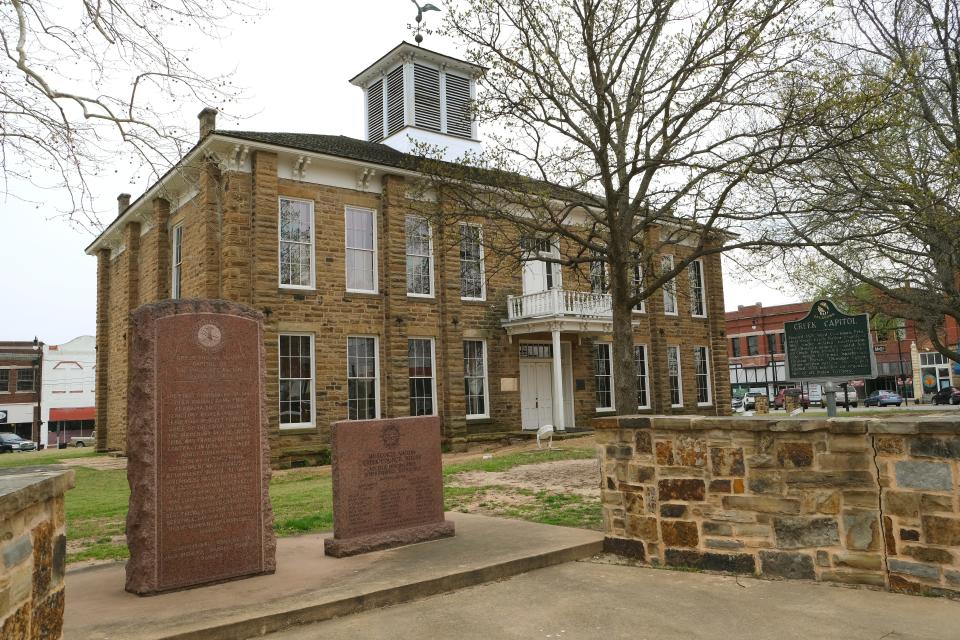
The Creek Council House was almost completely torn down in the 1920s
Congress formally terminated the powers of tribal governments in Oklahoma in a series of acts that made the way for statehood in 1907. The U.S. government then leased the Council House to local officials, who used it as a courthouse and sheriff’s office. The city of Okmulgee eventually bought it and allowed various civic groups to use the space.
By the 1920s, some residents called for tearing it down altogether and filling the city square with something else. They went so far as tearing down parts of the stone wall surrounding the Council House, according to “Okmulgee County History” published in 1985.
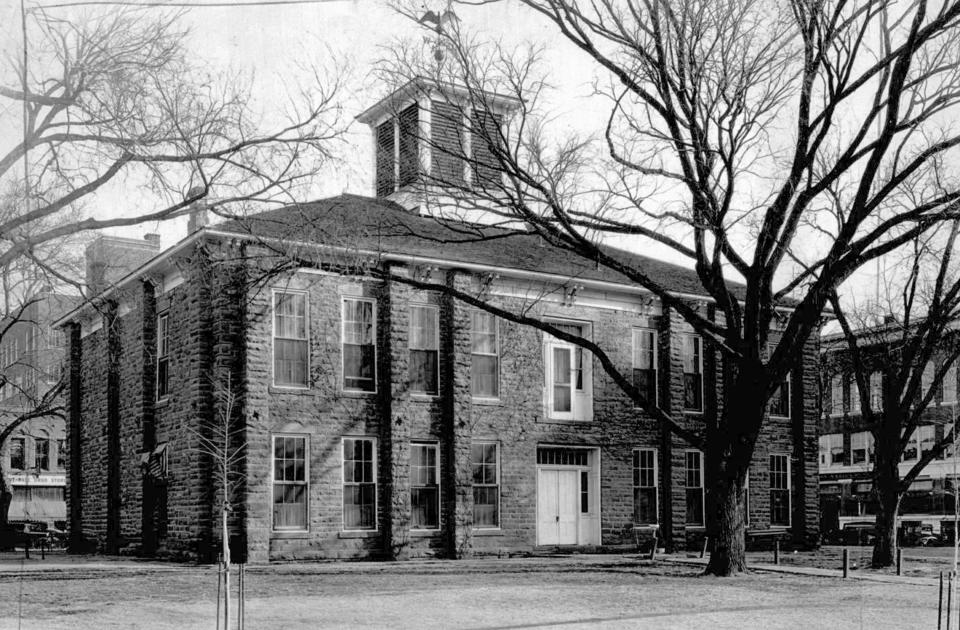
But enough people rallied to save it. Their advocacy was boosted by Will Rogers, the Cherokee humorist who closed out his 1926 show in Okmulgee with an entreaty to save the building. The Council House was operating as a museum by the 1930s, with a statewide news wire reporting hundreds of people visited each month, making it one of the county’s most popular attractions.
But the Muscogee Nation was not involved in operations. The tribe regained federal recognition in 1970 and worked to rebuild its government. Its headquarters are now located a five minute’s drive north of the Council House.
The tribe bought the Council House from the city for $3.2 million in 2010. It later purchased the museum collections from a separate group and oversaw extensive renovations, including restoring portions of the damaged stone wall.
Oklahoma landmarks: How this mansion fits into a small-town story of oil, traded tribal land and mysteries
The space officially reopened to the public in 2018. It is open most Mondays through Fridays, except for holidays. It does not charge admission.
Although most rooms were restored to their original layout, the House of Warriors has a modern addition: a long table and chairs to fit the 16 current members of the Muscogee National Council.
That was an intentional decision so the tribe’s legislative branch could still hold meetings in the space, and visitors can see how the tribal government operates in the present day, Beaver said.
“You’re not seeing a reenactment,” he said. “You’re seeing the real thing.”
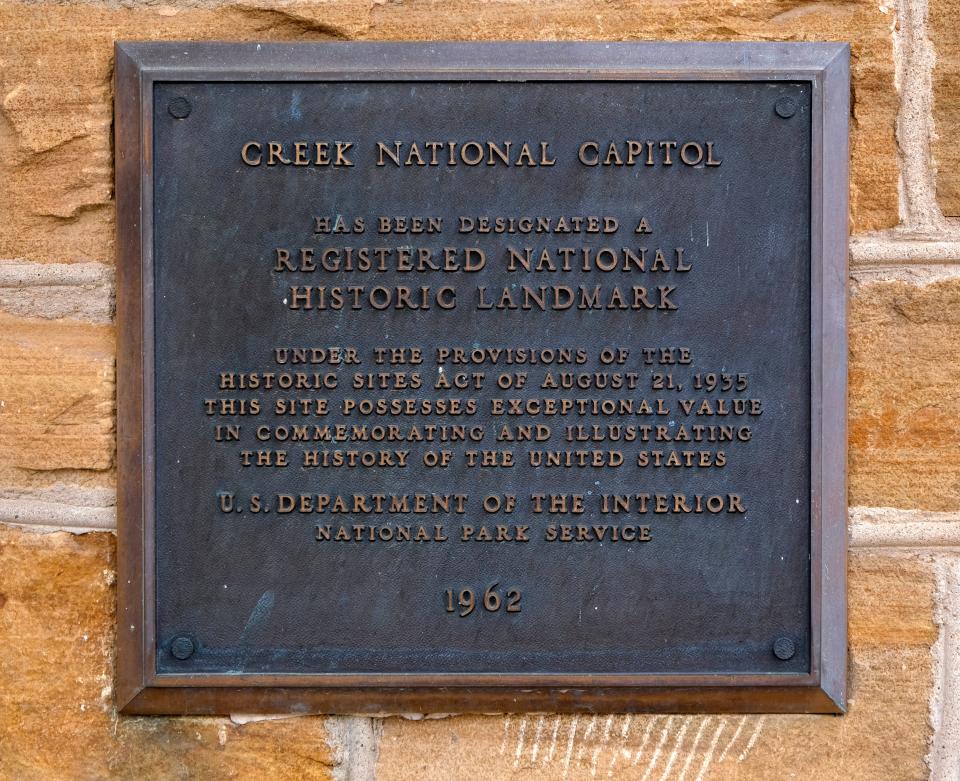
Molly Young covers Indigenous affairs. Reach her at mollyyoung@gannett.com or 405-347-3534.
This article originally appeared on Oklahoman: History behind the Muscogee Creek Nation Council House in Okmulgee

